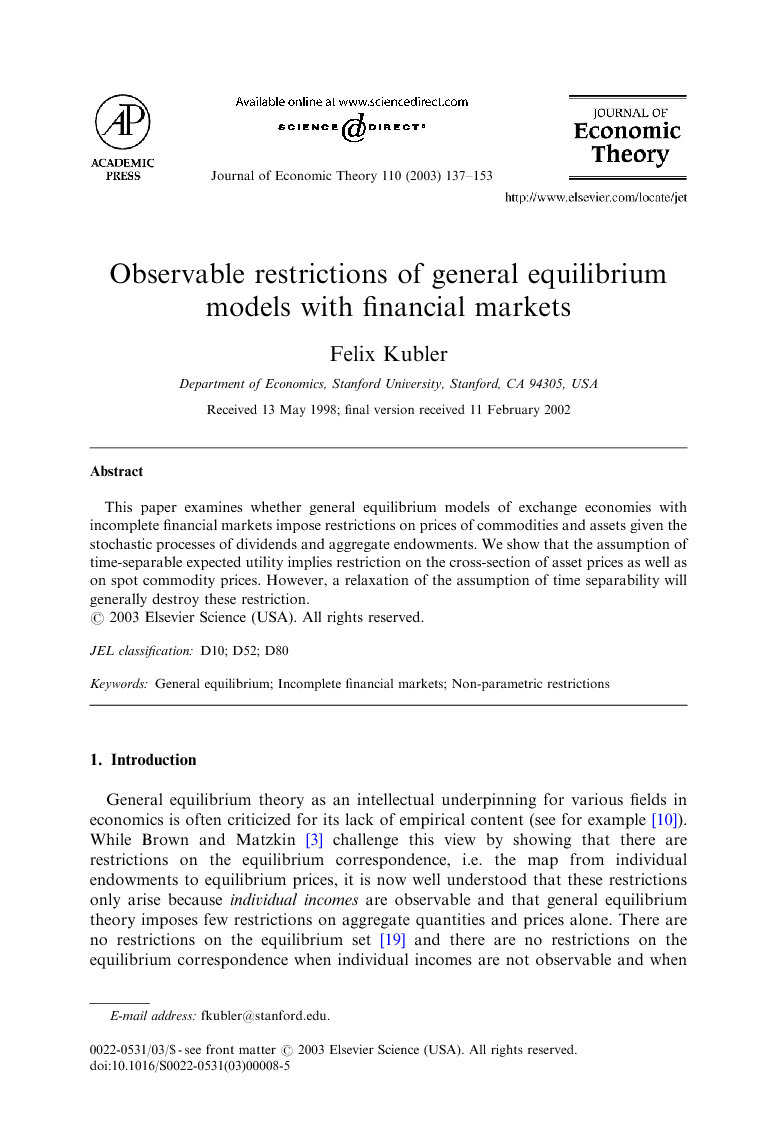ترجمه فارسی عنوان مقاله
محدودیت های قابل مشاهده از مدل تعادل عمومی با بازارهای مالی
عنوان انگلیسی
Observable restrictions of general equilibrium models with financial markets
| کد مقاله | سال انتشار | تعداد صفحات مقاله انگلیسی |
|---|---|---|
| 28564 | 2003 | 17 صفحه PDF |
منبع

Publisher : Elsevier - Science Direct (الزویر - ساینس دایرکت)
Journal : Journal of Economic Theory, Volume 110, Issue 1, May 2003, Pages 137–153
ترجمه کلمات کلیدی
تعادل عمومی -
بازارهای مالی ناقص -
محدودیت های غیر پارامتری -
کلمات کلیدی انگلیسی
General equilibrium,
Incomplete financial markets,
Non-parametric restrictions,

